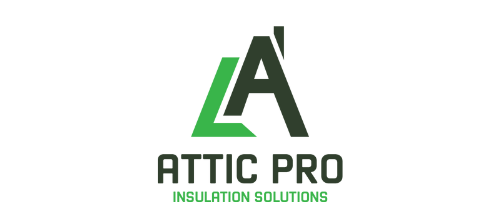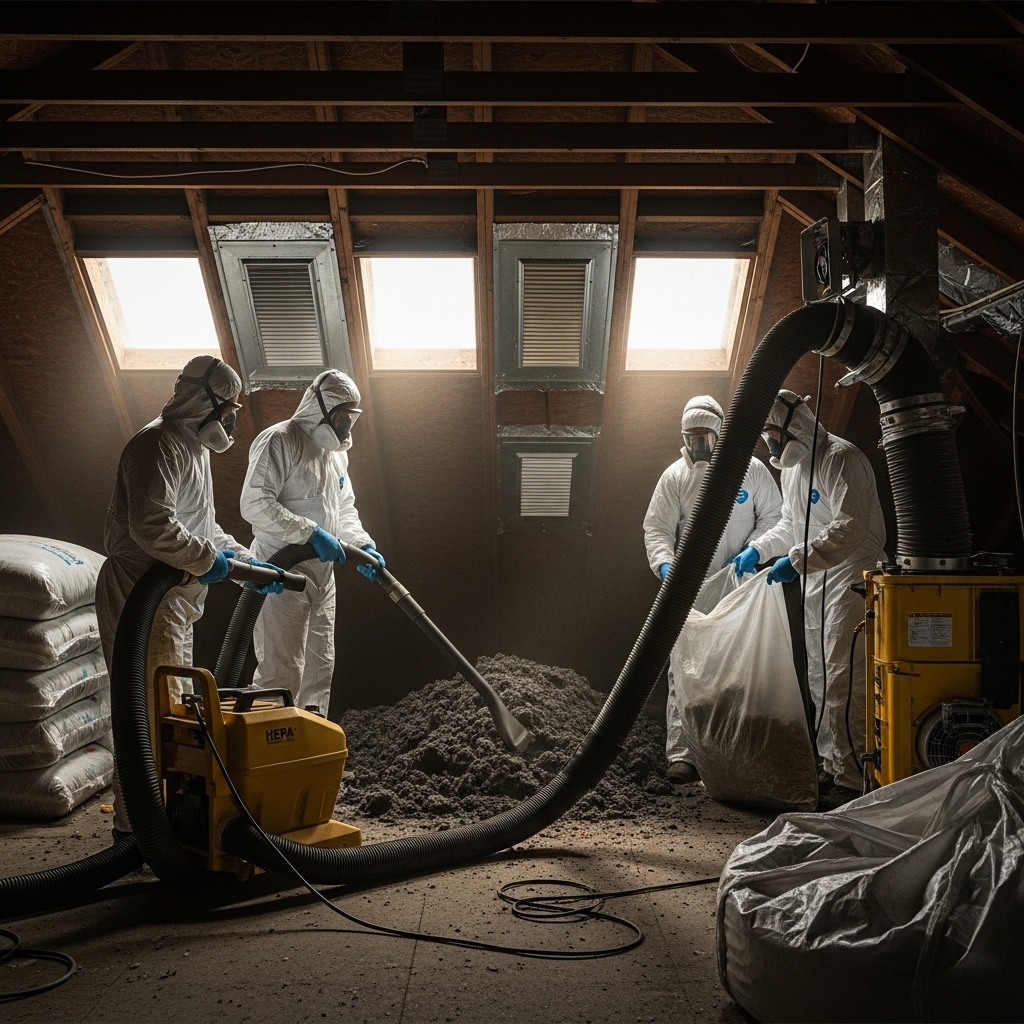Attics in Los Angeles are an ecosystem of their own. From the cool, salty mornings near the coast to the scorching Valley afternoons, these spaces breathe the city’s moods. When rodents get in, they leave behind more than noise. Contamination settles deep into insulation, odors cling to raw wood and chases, and fine particulates can drift through ceiling penetrations into living spaces. Effective attic sanitation is a disciplined process, not a quick tidy-up, and it must be adapted to LA’s varied construction styles—from Spanish tile roofs with open eaves to hillside homes laced with knee walls and vaulted ceilings. If you are preparing for a cleanup or weighing your options, here is a detailed, local guide to what proper attic sanitation looks like, why it matters, and how modern rodent sanitation restores both health and comfort.
The goal is twofold: remove contamination safely and set conditions that discourage a repeat. That means controlled removal of droppings and soiled insulation, careful disinfection, targeted odor neutralization, and a keen eye for access points that might allow future intruders. The best teams work methodically, documenting each step so you can see what changed in a space most homeowners rarely visit.
Inspection: Seeing the Attic as a System
Every attic tells a story. A proper inspection begins at the access hatch, continues along joist bays, and looks up into rafter cavities and chases. Inspectors note droppings, urine staining, nest sites, and rubbed trails along wood. They examine gable vents, roof returns, plumbing and electrical penetrations, and the condition of insulation—whether batts or blown-in. In hillside homes, inspectors pay special attention to knee wall voids and transitions where mansard roofs meet interior ceilings, common hideouts for nests.
HVAC equipment and ductwork deserve a careful look. Rodents sometimes run along flex ducts, leaving compression trails and potential tears. If duct insulation is damaged or contaminated, the sanitation plan will flag it. The inspection should also consider airflow: bath fan ducts, recessed lighting cans, and chimney chases can act like chimneys, moving dust and odor into living spaces if not managed during cleaning.
Containment and Protection of Living Spaces
Before work begins, technicians protect the home’s interiors. Drop cloths or runners line the path from entry to the attic hatch. The hatch itself is wrapped or fitted with a temporary barrier to capture debris. If insulation removal is expected, negative air machines with HEPA filtration are staged to create a slight draw that captures airborne dust. In occupied homes, this step is key to preserving indoor air quality during a dusty phase of work.
Containment also extends to storage. If your attic holds boxes or seasonal items, the team will advise on removal, cleaning, or disposal depending on contamination. In some cases, items can be wiped and saved; in others, the safest choice is to discard. The guiding principle is health and practicality: keep what can be cleaned effectively and let go of what cannot.
HEPA Vacuuming and Source Removal
Sanitation starts with source removal, not fragrance. HEPA vacuums capture fine particles that ordinary shop vacs would simply blow back into the space. Technicians work systematically, moving along joist bays and around equipment platforms to collect droppings, nesting material, and loose debris. Special care is taken near penetrations where contaminants can be dislodged into living spaces. In some attics, a light vacuuming may be all that is needed; in others, it is the first step before insulation removal.
Los Angeles attics often span large, open areas with truss systems that make navigation tricky. Experienced crews understand how to move safely to avoid drywall damage while reaching distant corners. In homes with low-slope roofs or segmented sections, the method may shift to hand tools and slower progress. The difference shows in the results: cleaned joist cavities and a significant reduction in airborne particulates.
Insulation Removal and Replacement
When contamination is widespread—visible urine staining, strong odor, or flattened trails crisscrossing the blanket—removal and replacement of insulation becomes the practical choice. Crews use insulation vacuums connected to sealed bags, maintaining negative pressure to keep dust in check. Batts are bagged by hand, while blown-in material is vacuumed. Underneath, technicians often discover concentrated contamination or forgotten construction debris. Removing that material is critical to eliminating odor and the pheromone cues that can attract new rodents.
Replacement follows sanitation and disinfection. The new insulation type and R-value should suit LA’s climate and your home’s design. Installed evenly, with baffles maintaining soffit ventilation and clearances around recessed lights and flues, the fresh blanket improves comfort and efficiency. A professional will also advise on access platforms to protect the new insulation around mechanical equipment, reducing future disturbance during maintenance.
Disinfection and Odor Neutralization
After debris and soiled insulation are removed, surfaces are treated. Disinfectants appropriate for porous and non-porous materials are applied with attention to contact times. Technicians revisit areas with heavy staining or nesting sites, allowing the solution to work before wiping or reapplying. Odor neutralizers target the compounds responsible for the characteristic ammonia-like scent of rodent activity. In severe cases, sealing of stained wood may be recommended after cleaning to lock in residual odor and provide a clean surface for the new insulation.
It is worth noting that odor is more than a nuisance. Persistent scent cues can draw rodents back, especially in neighborhoods where pressure is high due to food sources and shelter. That is why thorough removal combined with neutralization matters as much as sealing entry points.
Exclusion Touchpoints Discovered During Sanitation
While full exclusion may be a separate service, sanitation reveals invaluable clues. Gaps at plumbing stacks, missing screens on gable vents, and voids around conduit penetrations are often discovered during cleanup. In Los Angeles, tile roof edges and decorative roof returns create charming lines—and also entry points if not properly screened. A good crew documents these findings and, where feasible, makes minor corrections or schedules dedicated exclusion work to follow.
One common LA scenario involves attic spaces above attached garages. Door seals, attic returns, and open chase lines can allow movement between garage and living areas. As sanitation proceeds, technicians mark these areas for sealing to prevent a rebound of activity once the attic is clean and inviting again.
Mid-Project Check-in and Quality Control
At the project’s midpoint, expect an update: what has been removed, what remains, and any surprises discovered. This transparency allows homeowners to approve minor scope adjustments, such as expanding insulation removal in a newly uncovered wing or adding targeted sealing. It is also a good time to discuss the schedule for reinstalling insulation and to confirm product selections.
If you are coordinating with a pest control company, mid-project is the moment to sync. Traps may be adjusted to account for newly opened pathways, and sanitation teams can avoid disturbing active monitoring devices. When these efforts are aligned, results improve dramatically.
Final Detailing and Reinstallation
Before new insulation goes in, technicians perform a final detail pass. This includes a second look at joist bays, a check for missed droppings, and a review of all treated surfaces. Fresh insulation is then installed with attention to even coverage, depth markers, and ventilation baffles. If your attic includes storage platforms, they are cleaned and re-laid, and access hatches are weatherstripped to reduce air leakage and help keep conditioned air where it belongs.
With everything back in place, crews remove containment, wipe down pathways, and provide a walkthrough. Photos illustrate the transformation, and recommendations for aftercare help you maintain the improvement.
Aftercare: Keeping a Clean Attic Clean
Once sanitized, your attic is in a stable, healthy state. To keep it that way, reduce attractants around the home’s exterior, such as unsecured trash or pet food. Trim vegetation away from walls and rooflines, and ensure that vent screens remain intact. Schedule a check-in after major weather changes or nearby construction, since those events can shift rodent movement and pressure. Inside, listen for new noises and report them early; catching a small intrusion quickly prevents another round of cleanup.
Homeowners often ask about attic ventilation after sanitation. Proper airflow helps manage moisture and temperature, and it can support odor control after treatment. Your technician can confirm that soffit and ridge vents function as intended and that baffles preserve airflow under the new insulation.
What You Will Experience During Service
Expect some noise from HEPA vacuums and insulation equipment, along with the hum of filtration units. Crews will move carefully along joists, and there may be occasional thumps as they navigate corners or truss webs. You should see protective runners from the front door to the attic access and sealed bags staged neatly before removal. The aim is to leave your living areas as clean as they were on arrival—often cleaner, because pathways are wiped down and the hatch area is tidied before crews depart.
Midway through the job is a good moment to revisit goals and adjust any preferences. If you wish to preserve storage areas or change insulation type, communicate that as early as possible. The team can usually accommodate within the same timeline, provided changes do not require additional trades.
Frequently Asked Questions
Q: How long does attic sanitation usually take? A: Most single attics can be inspected, cleaned, and re-insulated within one to two days, depending on size and contamination. Complex, segmented attics or homes with multiple access points may add time, but your provider will map this out during the initial walkthrough.
Q: Do I need to leave the house? A: Typically, no. With proper containment and HEPA filtration, most homeowners remain in place. If you are sensitive to noise or cleaning products, you may choose to be out during insulation removal and disinfection windows.
Q: What if my attic is finished or used for storage? A: The plan adapts. Finished spaces require careful protection and possibly more hand work. Stored items are evaluated for cleaning or disposal based on contamination and value.
Q: Will the odor be completely gone? A: Thorough source removal and neutralization usually eliminate odors. If a faint scent lingers, it often indicates hidden contamination or an unsealed access point. Targeted follow-up resolves these cases.
Q: How do I keep rodents from returning? A: Pair sanitation with exclusion. Seal gaps, repair vent screens, maintain door sweeps, and reduce attractants outside. Periodic checks help catch small issues before they expand.
Give Your Home the Clean Slate It Deserves
If rodent activity has turned your attic into a source of stress, there is a clear path back to clean air and quiet nights. Choose a provider that treats your home like a system, works with containment and HEPA filtration, and shows you the results in photos you can keep. For a thorough reset and a healthier home, schedule expert Los Angeles rodent sanitation today and make your attic an asset again rather than a worry overhead.

